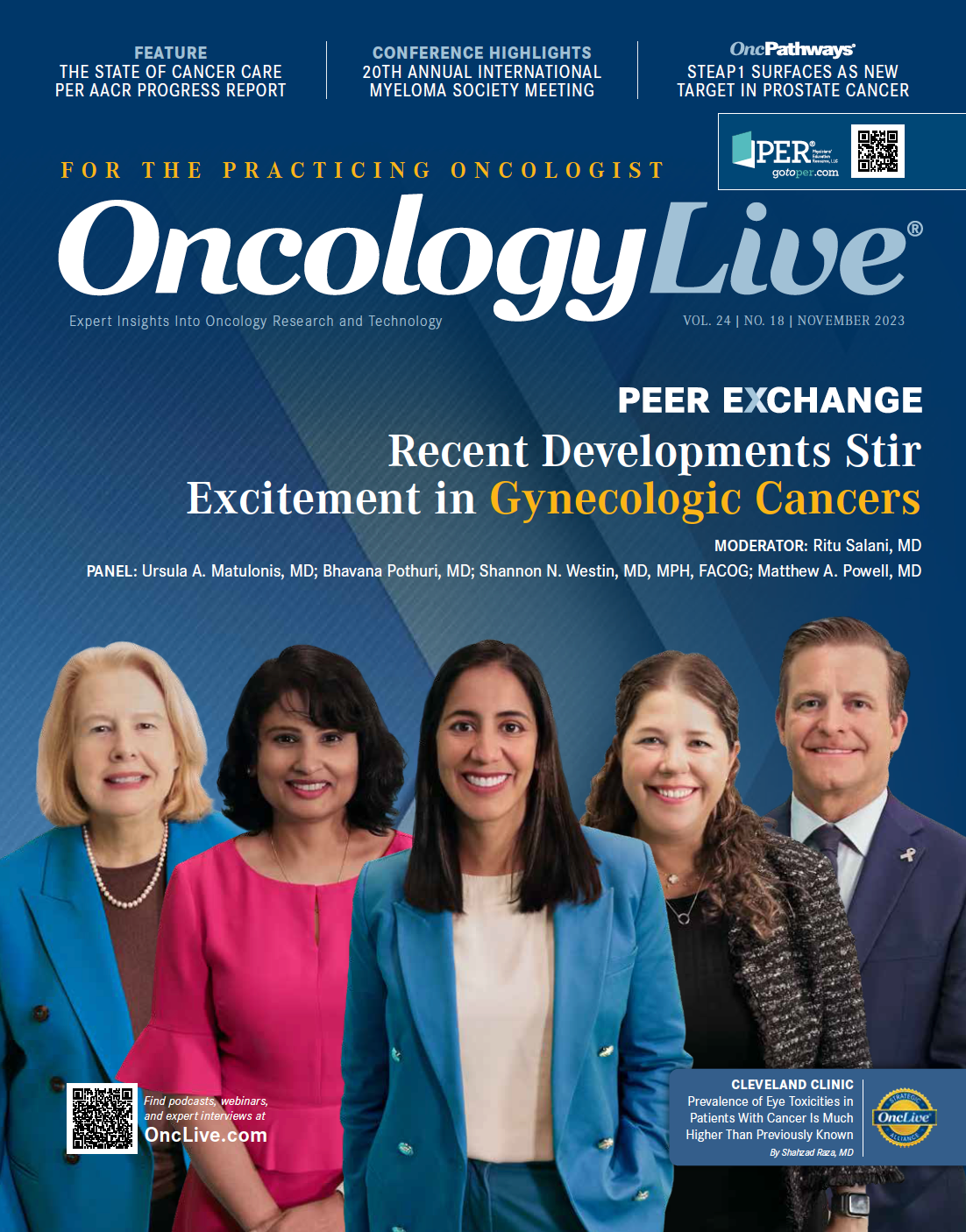Publication
Article
Prevalence of Eye Toxicities in Patients With Cancer Is Much Higher Than Previously Known
Author(s):
In the real-world setting, cases of ocular adverse effects have emerged with greater frequency both in new and established therapies than has been previously observed in many clinical trials.
Shahzad Raza, MD

Newer treatment for patients with cancer such as monoclonal antibodies, immunotherapies, antibody–drug conjugates, growth factor receptors, checkpoint inhibitors, and targeted therapies have been shown to improve prognosis. Yet in the real-world setting, cases of ocular adverse effects have emerged with greater frequency both in new and established therapies than has been previously observed in many clinical trials.1,2
Investigators at Cleveland Clinic Taussig Cancer Center recently published a clinical review that compiles ocular toxicities of several anticancer drugs in an attempt to predict who will be impacted by these AEs and what treatments and interventions can mitigate these risks. The researchers analyzed patient cases as well as prior medical literature to
better understand ocular complications that have occurred in patients taking antineoplastic agents.
“As clinicians, we need to look at not just the efficacy of a treatment but what toxicities are occurring to vital organs like the eyes and the impact this has on that patient’s quality of life,” Shahzad Raza, MD, a physician in the Department of Hematology and Medical Oncology at Cleveland Clinic Taussig Cancer Center in Ohio, and senior author of the study, said in an article.1 “Patients struggle because they don’t know how to navigate the situation, and physicians are often unsure what steps to take to alleviate ocular toxicities. Ophthalmologists should be involved much earlier [on] in treatment decision-making and the potential risks to the eyes.”
Many unknowns remain about how to manage these issues, including when to pause treatment and when to reintroduce
it. The study authors combined in-depth clinical data regarding how ocular toxicities occur with data from published literature to develop a reference tool for providers to help guide them on what steps to take to mitigate these toxicities.
Key Findings
- Commonly used chemotherapy agents such as alkylating agents, antimetabolites, microtubule inhibitors, and new targeted therapies can cause eye complications. These include corneal ulcers, keratoconjunctivitis, inflammation of eyelids, uveitis, macular edema, and loss of vision.
- In the phase 1 DREAMM-1 trial (NCT02064387), patients treated with belantamab mafodotin-blmf (Blenrep; n = 35) experienced keratopathy at a rate of 53%.
- In another study, patients treated with high-dose carmustine (n = 110) experienced retinal hemorrhaging at a rate of 24%.
- Several eye toxicities require frequent communication
between oncologists and ophthalmologists. Similarly, it is important to have open communication between oncologists and patients, especially in cases of very advanced cancers with limited prognosis where such treatments may not add much to the quantity or quality of life.
Although eye toxicities are not the norm, they do occur more frequently than is typically observed in clinical trials, and in some cases rapidly. Depending on the therapy, a temporary cessation of treatment or lowering of dose can help reverse more severe toxicities. Based on these findings, the study authors recommend the following if a patient is
receiving a therapy with which there is a risk of ocular AEs:
- Administer a baseline ophthalmic exam prior to initiating cancer treatment and perform periodic exams throughout treatment to detect ocular toxicities earlier on.
- Discuss the risks of ocular toxicities with patients so that if they experience early symptoms they can notify their care team immediately.
- Ensure the patient already has an ophthalmologist so that if a problem arises, they can get an appointment quickly.
“In some cases, eye issues occur gradually but in some instances such as retinal detachment, they can happen right away and become an emergency,” Raza said. “If a patient is just starting to reach out to an ophthalmologist when these toxicities occur, often the damage has already been done, and by the time their oncologist is holding the drug, the cancer [has] progress[ed]. The moment an issue emerges,
there should be a lifeline to an ophthalmologist.”
Raza and a team of computational mathematicians are using data mining to evaluate overall toxicity trends of oncology agents. By mining national patient databases of thousands of patients, they hope to discover what role factors such as race, ethnicity, drug dosing, and gene modification play in drug toxicities. “What we don’t yet understand is why one patient
has an AE and another does not,” Raza explained. “What factors are involved? [It] may be inherent genetics but we feel there are particular pharmacokinetic and pharmacogenomic signals involved that may amplify certain toxicities.”
Ultimately, the goal is to bring pharmacovigilance and genomics together to better predict when toxicities will occur so that clinicians can tailor treatment accordingly.
References
- Eye toxicities more prevalent side effect of cancer treatment than previously understood. Cleveland Clinic. September 7, 2023. Accessed October 10, 2023. https:// consultqd.clevelandclinic.org/eye-toxicities-more-prevalent-side-effect-of-cancer-treatment-than-previously-understood/
- Bader A, Begemann M, Al-Obaidi A, Habib MH, Anwer F, Raza S. Ocular complications of antineoplastic therapies. Future Sci OA. 2023;9(7):FSO871. doi:10.2144/fsoa-2022-0081










